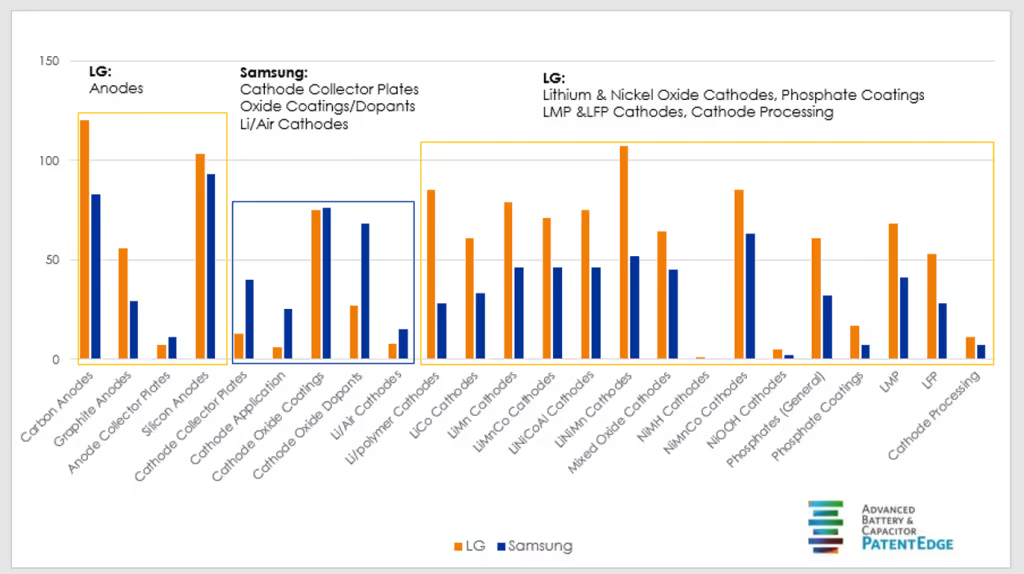
How to Choose Prior Art Search Software in 2026: A Buyer's Guide for R&D Teams


As a research and development manager or engineer, you know that staying ahead of the competition is paramount. One way to do this is by conducting a patent landscape analysis.
With patent landscape analysis, teams can gain insight into what competitors are doing in their industry as well as understand existing technology trends before investing resources in new ideas.
In this blog post, we’ll explore exactly what patent landscape analysis entails, including types of patents present in the market, challenges faced during the process, and how Cypris can help with your team’s efforts!
Table of Contents
What is Patent Landscape Analysis?
How to Conduct a Patent Landscape Analysis
Step 1: Identify Relevant Patents
Step 2: Look Into Claims and Prior Art Documents
Step 4: Create an Actionable Plan
Challenges of Patent Landscape Analysis
How Can Cypris Help with Patent Landscape Analysis?
Patent landscape analysis is a process of researching and analyzing the patent environment to identify opportunities, risks, and trends in a particular field or industry. It involves researching existing patents, understanding their claims and prior art documents, as well as keeping track of changes in the market. This type of analysis helps teams assess potential competitors and partners, identify areas where innovation could be beneficial, evaluate the risks of developing new products, and develop strategies for protecting intellectual property.
Don’t get left behind in the patent race! Get ahead of the competition with patent landscape analysis. #Innovation #R&D #Patents Click to Tweet
Conducting a patent landscape analysis requires research into existing patents, understanding their claims and prior art documents, and keeping track of changes in the market.
Here’s a step-by-step guide to conducting a patent landscape analysis properly.
Start by researching relevant patents that are related to your product or service. This can be done using various tools such as patent databases, search engines, and analytics software. Once you have identified the relevant patents, it is important to thoroughly research them for any potential conflicts with your own product or service.
After identifying the relevant patents, it is important to understand each one’s claims and prior art documents in order to determine if there are any potential issues with your own product or service. This involves reading through each document carefully and making sure that all aspects of the claim are understood before proceeding further.
Once you have collected all of the necessary data from your research on existing patents, it is time to analyze this information in order to know how best to proceed with developing your product without infringing upon another’s intellectual property rights.
Various analytical techniques such as clustering algorithms can be used for this purpose in order to gain insights into trends that could affect your product development plans.
The final step is creating an actionable plan based on data analysis. This plan should include steps on how to protect yourself against infringement while also ensuring compliance with applicable laws governing intellectual property rights. Doing so will help you avoid any legal repercussions later on.
There are various tools that can help simplify and streamline patent landscape analysis, including Google Patents, the USPTO database, analytics software like Cypris, and other resources that provide free access to public records.
Key Takeaway: A thorough patent landscape analysis can help R&D and innovation teams identify potential opportunities in the market.
There are four main types of patents: utility patents, design patents, plant patents, and provisional patents.
These patents protect inventions such as machines, processes, or compositions of matter. These are the most common type of patents and require an invention to have a novel structure or process with some degree of usefulness. Examples include new computer programs, medical devices, and pharmaceuticals.
Design patents protect ornamental designs for products such as furniture or clothing items. The design must be both novel and non-obvious in order to qualify for a design patent from the United States Patent and Trademark Office. Examples include unique patterns on fabric or shapes of furniture pieces.
Plant patents protect new varieties of plants developed through cross-breeding techniques or other methods involving genetic engineering like cloning. In order to receive plant patent protection, the variety must be distinct from all other species known before it was created.
An example would be a newly developed hybrid rose bush with unique coloration and characteristics not present in any existing roses.

(Source)
Analyzing patent landscapes can be a daunting task due to the sheer number of patents that need to be examined. Identifying relevant patents is often difficult as there may be thousands of similar patents, making it hard to determine which ones are applicable.
Patent landscape analysis requires extensive research into existing databases such as Google Patents and USPTO Patent Full Text Database. Keep in mind that international patents could also affect your product and may not always appear in domestic databases.
In addition to identifying relevant patents, it’s also necessary for R&D teams to analyze each one thoroughly. This process involves examining both the literal language and the broader interpretation of what might constitute infringement based on industry standards or accepted practices.
Furthermore, keeping track of changes in the market is essential for staying up-to-date on new developments and ensuring that any potential infringements are avoided.
Key Takeaway: Analyzing patent landscapes requires an in-depth understanding of the claims and prior art documents associated with each patent. To ensure that any potential infringements are avoided, R&D teams must identify all relevant patents related to their invention and keep track of changes in the market.
Cypris provides a comprehensive platform for R&D teams to streamline their data sources into one platform. This allows teams to quickly access all relevant information needed for their research projects without having to switch between multiple sources or applications.
Cypris automates tasks such as searching through large datasets for specific keywords or phrases so that teams can save time and money while still getting accurate results quickly.
For example, with the help of Cypris’s patent landscape analysis tool, users can search through thousands of patents in seconds instead of spending hours manually going through them. The tool also offers visualizations and analytics that allow users to get an overview of the patent landscape they are researching in order to make informed decisions about their project.
Cypris also keeps track of changes in the market by providing real-time updates on new developments. With this feature, companies can ensure they remain competitive in their respective markets by staying ahead of any potential threats from competitors who may have already developed similar products before them.
Patent landscape analysis is an important part of the research and innovation process. It helps teams to identify potential opportunities for product development, as well as areas where competitors are innovating. With Cypris, R&D and innovation teams can easily access all the data sources they need to conduct a comprehensive patent landscape analysis.
By utilizing this powerful tool, organizations can gain valuable insights into their competitive environment that will help them make informed decisions about their product development strategy.
Are you an R&D or innovation team looking for a way to quickly analyze patent landscapes? Look no further than Cypris, the research platform designed specifically for teams like yours!
With its centralized data sources, Cypris provides rapid time-to-insights so that your team can make informed decisions faster. Get ahead of the competition by taking advantage of this powerful tool today!